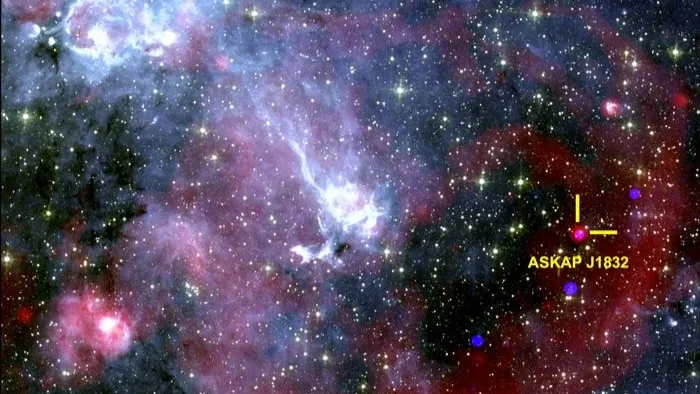
A Cosmic Mystery: Astronomers Uncover a Strange Object Emitting Signals Every 44 Minutes
2025-05-28
Author: Kai
Astronomers Stumble Upon Unexplained Cosmic Signals
In a groundbreaking discovery, astronomers have identified a bizarre celestial object that sends out enigmatic signals from the depths of space. Dubbed ASKAP J1832-0911, this object emits bursts of radio waves and X-rays for two minutes every 44 minutes, leaving researchers baffled.
A Rare Cosmic Phenomenon
Spotted by the Australian Square Kilometre Array Pathfinder (ASKAP) and NASA's Chandra X-ray Observatory, these peculiar, repeating signals are unlike anything observed before. Researchers are eager to unravel this cosmic enigma, which they believe could potentially lead to new physics discoveries. Their findings were shared on May 28 in the prestigious journal Nature.
What Is ASKAP J1832-0911?
"This object is unlike anything we have seen before," stated Andy Wang, the lead author of the study and an astronomer at Curtin University in Perth, Australia. Experts speculate that ASKAP J1832-0911 might be a magnetar—a remnant core of a dead star with intense magnetic fields—or possibly a binary system featuring a highly magnetized white dwarf.
However, Wang noted that even these theories fall short of fully explaining the observed phenomena. "This discovery could indicate a new type of physics or new models of stellar evolution," he added.
A New Class of Astrophysical Events
ASKAP J1832-0911 has been classified as a long-period transient (LPT), a rare category of extreme astronomical occurrences that emit beams of radio waves similar to cosmic lighthouses. First identified in 2022, astronomers have catalogued only ten such LPTs.
Breaking the Rules of Pulsars
Unlike traditional pulsars that, caused by neutron stars, release radio signals every few seconds or milliseconds, LPTs operate on intervals from minutes to hours—a rhythm that was previously considered implausible. This prolonged timing makes the mechanisms behind these signals and their on-off cycles a tantalizing mystery.
A Serendipitous Detection
When researchers initially detected the signals with the ASKAP telescope, they turned to the Chandra X-ray Observatory to verify their findings. To their amazement, Chandra confirmed the existence of ASKAP J1832-0911 and, for the first time ever, captured an LPT emitting X-rays.
Wang described this confirmation as akin to "finding a needle in a haystack," emphasizing the importance of Chandra's simultaneous observation of the same section of sky.
The Path Ahead: Collaboration and Discovery
The astronomers are hopeful that the simultaneous detection of radio waves and X-rays will provide crucial insights into the workings of ASKAP J1832-0911. For a comprehensive understanding, any theories surrounding this cosmic phenomenon will need to explain both emission types.
To piece together this cosmic puzzle, the researchers advocate for more joint observations using both radio and X-ray telescopes, hoping to unlock the secrets of this enigmatic object.


 Brasil (PT)
Brasil (PT)
 Canada (EN)
Canada (EN)
 Chile (ES)
Chile (ES)
 Česko (CS)
Česko (CS)
 대한민국 (KO)
대한민국 (KO)
 España (ES)
España (ES)
 France (FR)
France (FR)
 Hong Kong (EN)
Hong Kong (EN)
 Italia (IT)
Italia (IT)
 日本 (JA)
日本 (JA)
 Magyarország (HU)
Magyarország (HU)
 Norge (NO)
Norge (NO)
 Polska (PL)
Polska (PL)
 Schweiz (DE)
Schweiz (DE)
 Singapore (EN)
Singapore (EN)
 Sverige (SV)
Sverige (SV)
 Suomi (FI)
Suomi (FI)
 Türkiye (TR)
Türkiye (TR)
 الإمارات العربية المتحدة (AR)
الإمارات العربية المتحدة (AR)